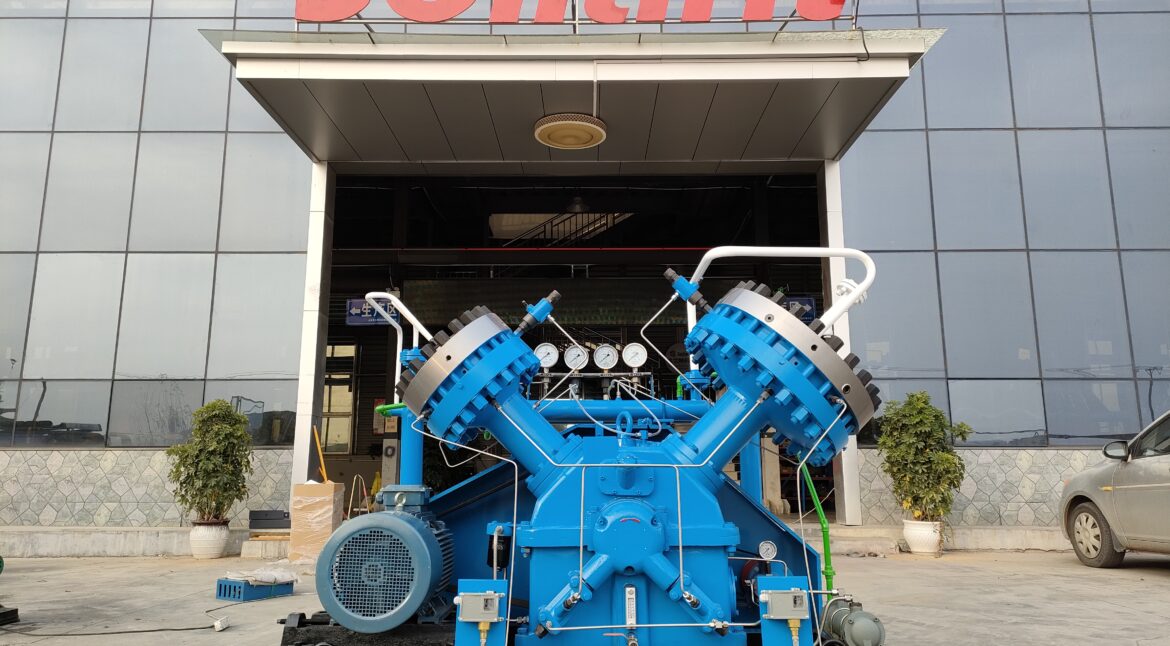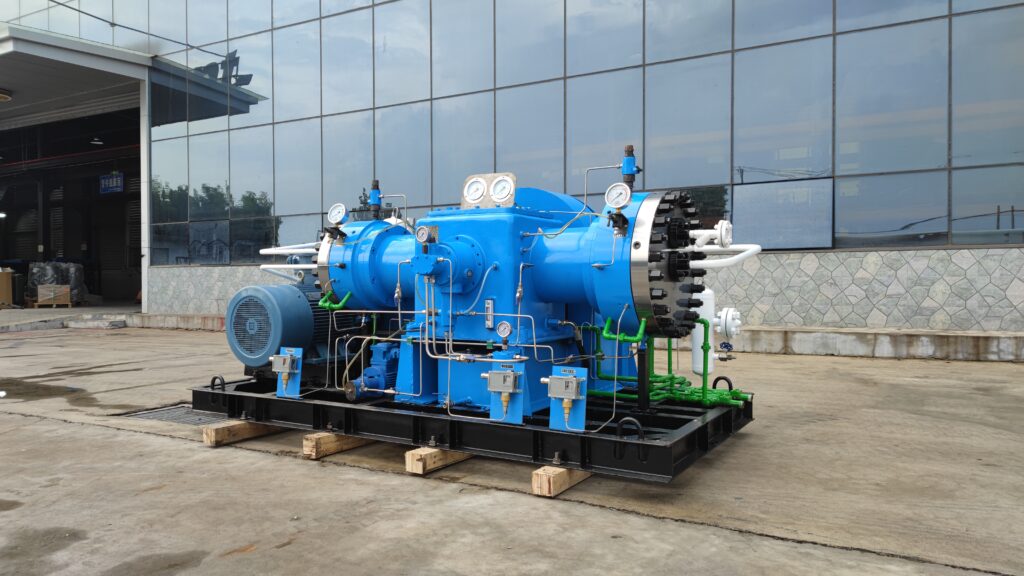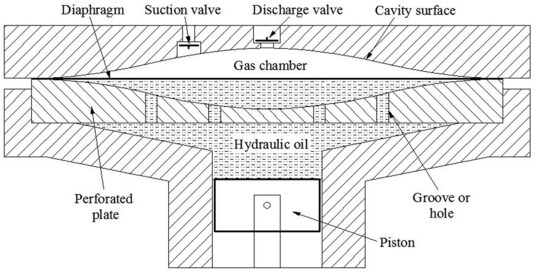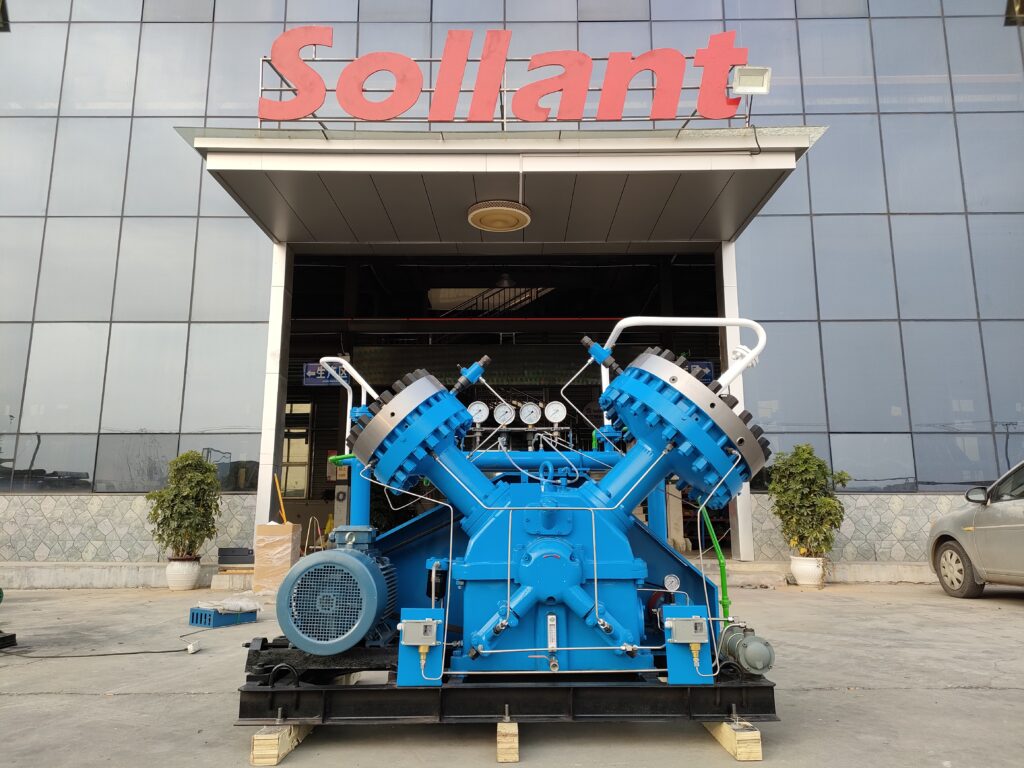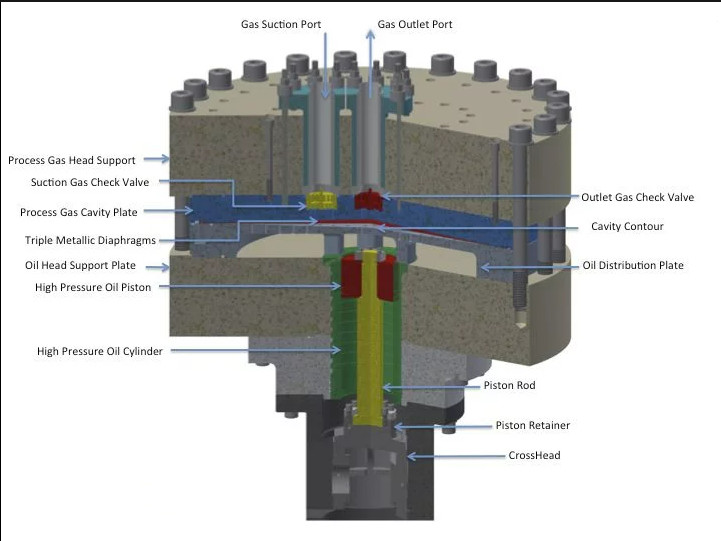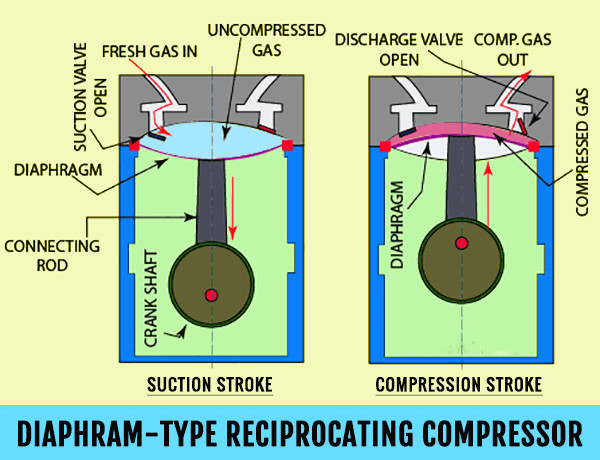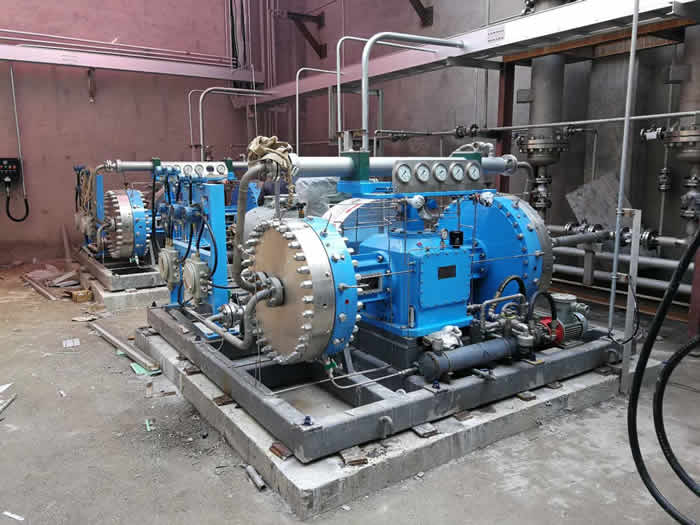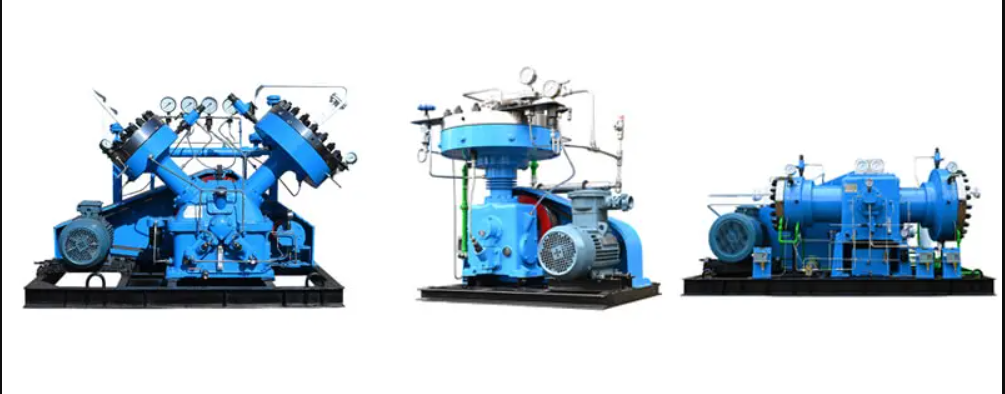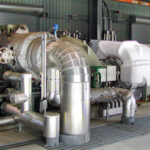1. What is the diaphragm compressor?
The diaphragm compressor, also know as membrane compressor, is a popular type of reciprocating compressor. Generally speaking, there are two systems: the hydraulic system used as motive power to control the compression process and the hydraulic system used to compress the air or gas.
The essential part of the diaphragm air compressor is the rotary diaphragm,which is controlled by a crankshaft and a connecting rod mechanism powered by the fluid. This diaphragm helps to deliver the air o gas inside the compression chamber and apply the required pressure.
For this reason, the membrane or the diaphragm is required to be reliable so that it can bear the pumped gas’s strain. Besides, this membrane of this diaphragm type compressor must be heat-resistant and chemical-resistant as the high-pressure diaphragm compressor should be suitable for compressing explosive and toxic gases.
2. What is the working principle of the diaphragm compressor?
As we mentioned before, this reciprocating hydrogen compressor is comprised of two parts: the hydraulic system and the pneumatic force system.
In the pneumatic force system, there are 3 diaphragm metal plates dividing the air compression system into two plate cavities: during the air compression process, the round flexible plate in the diaphragm gas compressor undergoes an elastic deflection, which creates a reduction in the volume of the space to make the compression. It’s worth mentioning that the membrane of the diaphragm air compressor is designed in different materials for different types of gases, including rare gases or toxic gases.
In the hydraulic system, the key part is the hydraulic crankshaft motor control system that moves the piston in low pressure. The working principle of this part is: the movement of the piston regulates the hydraulic fluid opposite to lower the side part of the diaphragm.
During the compression process, generally there are two steps: the suction stroke and the delivery droke: firstly, the diaphragm type compressor will intake the air, which means that the compensating pump delivers a low quantity of oil through the check valve in the oil head; then the diaphragm air compressor will compress the air, which means the number of oil increases to lift the membrane towards the gas and reduces the space of the air.
3. What are the applications of the diaphragm compressor?
The diaphragm type air compressor is widely used in many occasions. It’s especially popular for compressing toxic gases and rare gases such as hydrogen, nitrogen,etc. For this reason, the diaphragm gas compressor is also known as a hydrogen compressor, or h2 compressor, etc.
More specifically, the applications are the following:
Glass manufacture industries
Metal processing
Fiber optics, semiconductor or electronic products manufacturing
Rare gas or toxic gas storage
Gas mixing, blending, and recycling, etc.
4. What are the advantages of a diaphragm compressor?
Among so many diaphragm compressor manufacturers, why choose Sollant as your diaphragm compressor supplier? The reasons are the following:
High air pressure—The sollant Diaphragm Type Compressor is well known for its ability to handle high air pressures. It can process the air up to 1.5bar of pressure.
Energy efficiency—Compared with other diaphragm compressor manufacturers, Sollant helps you to save 30% of energy.
Wide applications—Thanks to a great variety of designs and sizes, the Sollant Diaphragm Compressor is suitable for both household applications and industrial applications.
Besides, it’s worth mentioning that our diaphragm-type air compressor is equipped with tight sealing in the hydraulic system so that the ionic fluid can’t mix with the gases. Thus our diaphragm air compressor is a real oilless diaphragm compressor.
For more information, please click: Sollant Diaphragm Compressor

